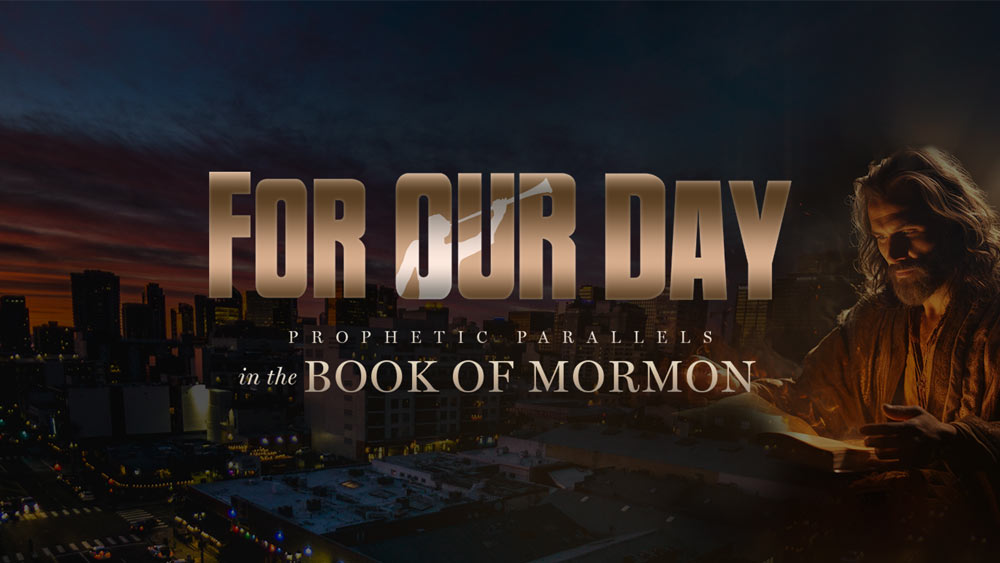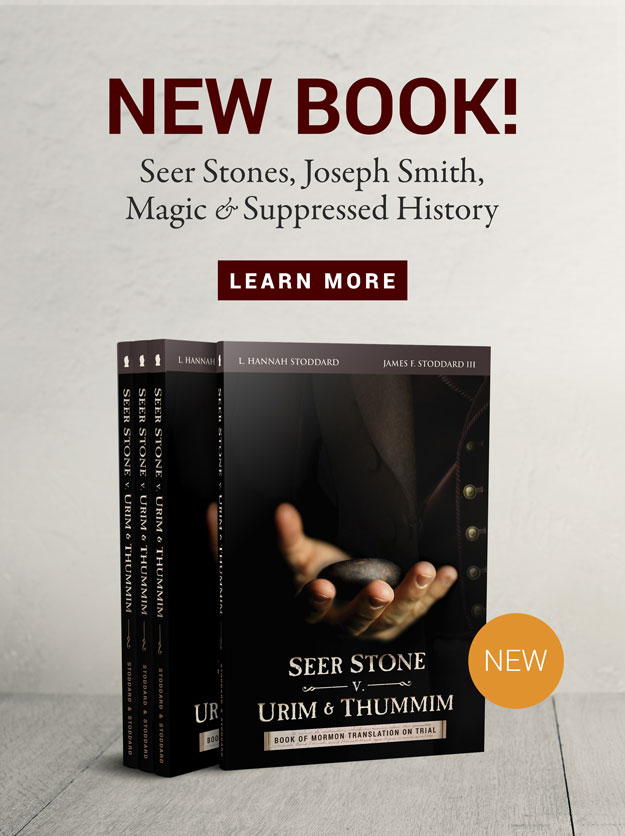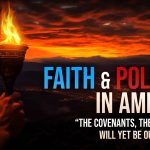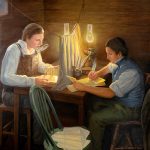Read about Wilford Woodruff in the interesting story the Eminent Spirits Appear to Wilford Woodruff

Early Life
Wilford Woodruff was born to Aphek Woodruff and Beulah Thompson. Of his father he wrote, “He never made any profession of religion until I baptized him into the Church of Jesus Christ on the first day of July, 1838. He was a man of great charity, honesty, and integrity and made himself poor by giving to the poor. He was liberal in accommodating his fellow men by lending money and by becoming surety for his neighbors. He generally said yes to every man who asked a favor at his hands.” (pg. 19)
Friendship with Robert Mason
“In the days of my youth I was taught by an aged man named Robert Mason, who lived in Sainsbury, Connecticut. By many he was called a prophet; to my knowledge, many of his prophecies have been fulfilled. The sick were healed by him through the laying on of hands in the name of Jesus Christ, and devils were cast out. His son was a raving maniac. After praying and fasting for him nine days, he arose on the ninth day and commanded in the name of Jesus Christ the devil to come out of him. The devil obeyed and the boy was made whole from that very hour. This man instilled these principles into my mind as well as into the mind of my oldest brother Azmon.
“Father Mason did not claim that he had any authority to officiate in the ordinances of the gospel, nor did he believe that such authority existed on the earth. He did believe, however, that it was the privilege of any man who had faith in God to fast and pray for the healing of the sick by the laying on of hands. He believed it his right and the right of every honest-hearted man or woman to receive light and knowledge, visions, and revelations by the prayer of faith. He told me that the day was near when the Lord would establish His Church and Kingdom upon the earth with all its ancient gifts and blessings. He said that such a work would commence upon the earth before he died, but that he would not live to partake of its blessings. He said that I should live to do so, and that I should become a conspicuous actor in that kingdom.

“The last time I ever saw him he related to me the following vision which he had in his field in open day:
‘I was carried away in a vision and found myself in the midst of a vast orchard of fruit trees. I became hungry and wandered through this vast orchard searching for fruit to eat, but I found none. While I stood in amazement finding no fruit in the midst of so many trees, they began to fall to the ground as if torn up by a whirlwind. They continued to fall until there was not a tree standing in the whole orchard. I immediately saw thereafter shoots springing up from the roots and forming themselves into young and beautiful trees. These budded, blossomed, and brought forth fruit which ripened and was the most beautiful to look upon of anything my eyes had ever beheld. I stretched forth my hand and plucked some of the fruit. I gazed upon it with delight; but when I was about to eat of it, the vision closed and I did not taste the fruit.’
‘At the close of the vision I bowed down in humble prayer and asked the Lord to show me the meaning of the vision. Then the voice of the Lord came to me saying: “Son of man, thou hast sought me diligently to know the truth concerning my Church and Kingdom among men. This is to show you that my Church is not organized among men in the generation to which you belong; but in the days of your children the Church and Kingdom of God shall be made manifest with all the gifts and the blessings enjoyed by the Saints in past ages. You shall live to be made acquainted with it, but shall not partake of its blessings before you depart this life. You will be blest of the Lord after death because you have followed the dictation of my Spirit in this life.’
“When Father Mason had finished relating the vision and its interpretation, he said, calling me by my Christian name: ‘Wilford, I shall never partake of this fruit in the flesh, but you will and you will become a conspicuous actor in the new kingdom.’ He then turned and left me. These were the last words he ever spoke to me on the earth. To me this was a very striking circumstance. I had passed many days during a period of twenty years with this old Father Mason. He had never mentioned this vision to me before. On this occasion he said he felt impelled by the Spirit of the Lord to relate it to me.
“The vision was given to him about the year 1800. He related it to me in 1830, the spring in which the Church was organized. Three years later when I was baptized into the Church of Jesus Christ of Latter-day Saints, almost the first person I thought of was this prophet, Robert Mason. Upon my arrival in Missouri with Zion’s Camp, I wrote him a long letter in which I informed him that I had found the true gospel with all its blessings; that the authority of the Church of Christ had been restored to the earth as he had told me it would be; that I had received the ordinances of baptism and the laying on of hands; that I knew for myself that God had established through Joseph Smith, the Prophet, the Church of Christ upon the earth.
“He received my letter with great joy and had it read over to him many times. He handled it as he had handled the fruit in the vision. He was very aged and soon died without having the privilege of receiving the ordinances of the gospel at the hands of an elder of the Church.
“The first opportunity I had after the truth of baptism for the dead was revealed, I went forth and was baptized for him in the temple font at Nauvoo. He was a good man, a true prophet; for his prophecies have been fulfilled. There was so much reason in the teachings of this man, and such harmony between them and the prophecies and teachings of Christ and of the apostles and prophets of old, that I believed in them with all my heart.” 1
Administration of President Wilford Woodruff — 1887-1898

Changes in Leadership.—Following the death of President Taylor the duty of presidency again devolved upon the council of the apostles, Counselors Cannon and Smith resuming their places with the twelve. The apostles continued to act in that position until the April conference in 1889, when the First Presidency was again organized with Wilford Woodruff as President. He selected George Q. Cannon and Joseph F. Smith as his counselors. At the time of this organization President Woodruff was 82 years of age, but hale and vigorous. He was born in Farmington, Hartford County, Connecticut, March 1, 1807; was baptized December 31, 1833, and ordained an apostle April 26, 1839. President Woodruff was a natural missionary and accomplished a great work in England and various parts of the United States.
The vacancies in the council of the twelve were not filled until the October conference in 1889, when Marriner W. Merrill, Anthon H. Lund and Abraham H. Cannon were called and ordained apostles.2
Dedication of the Manti Temple
The temple at Manti, Sanpete County, was dedicated May 21, 1888, Elder Lorenzo Snow offering the prayer. The services were repeated the two succeeding days. This was the third temple to be dedicated in Utah. The site was chosen in June, 1875, by President Brigham Young, and the excavation was begun in April, 1877. The corner stones were laid April 14, 1879, with the usual fitting ceremonies. The building is situated on a hill north-east of the city and is an imposing structure.3
The Crusade Continues
The crusade against those who had entered plural marriage continued after the death of President Taylor, but in some respects with less severity. President Grover Cleveland pardoned a number of the imprisoned men against whom the courts had been extremely severe. These included Joseph H. Evans, a man of seventy, Charles Livingston and Rudger Clawson. From this time on there was a more tolerant attitude manifested by some of the officers. Nevertheless the government continued with unyielding determination to suppress plural marriage, and more drastic legislation was proposed by Congress.4

The Crusade in Idaho
In Idaho the anti-“Mormon” feeling was intense. One officer—who afterwards was honored with the position of United States senator from Idaho—declared that he had selected “a jury that would convict Jesus Christ.” Nor was this blasphemous expression the only one uttered in that campaign. Men were hounded and treated in an inhuman manner, and the boast was that “Mormons” would be convicted with or without evidence before the courts.
The Idaho territorial legislature passed a law in 1885, containing the “Idaho test oath,” which disfranchised all members of the Church. It provided that electors should swear that they were neither polygamists nor members of an organization which taught, advised or encouraged the practice of polygamy. The supreme court of the United States sustained this law in a decision given February 3, 1890. It was enough to deprive a person of the franchise simply to declare that he was a member of the Church.5
The Strubble Bill
The enemies of the Church in Utah were greatly elated over this decision of the supreme court in the “Idaho test oath” law. They knew that no legislature in Utah would pass such a measure, but they had hopes that Congress would, and thus the great majority of the people of Utah would be disfranchised and their enemies be placed in control. A bill called the Strubble Bill, following the lines of the Idaho law was presented in Congress in 1890. Robert N. Baskin, who was as bitter against the Saints as it was possible for him to be, brazenly declared the object was “to wrest from the hands of the Priesthood the political power which it had wrongfully usurped and shamefully abused.” General John A. McClernand, of the Utah Commission, refused to be a party to such wickedness, and made a separate report condemning the proposed high-handed legislation. This bill never became a law for several reasons. Many of the conservative non-“Mormons” of Utah opposed the measure as being detrimental to the interests of the territory, and petitioned Congress not to pass it. Secretary of State James G. Blaine used his influence to defeat the measure for political reasons, but insisted that the Church do something to relieve the situation.6
President Woodruff’s Manifesto
While the Saints were in the midst of all these difficulties and afflictions, President Wilford Woodruff sought the Lord for relief. In answer to his earnest pleadings and constant petitions, the word of the Lord came to him in a revelation suspending the practice of plural marriage. The Latter-day Saints, with the feeling that the anti-polygamy legislation was a restriction of their religious rights, contested every move made by the government. When the supreme court sustained these laws, there was nothing left for the Church to do but submit or stand as violators of the law. They have never felt that the action of the courts was just, nor did they feel that it was within their power to suspend a commandment given to them by revelation from the Lord. The “manifesto” of President Woodruff brought relief. The people had done their duty. The Lord gave them the commandment and only he could authorize its suspension. President Woodruff, writing in his journal September 25, 1890, said:

“I have arrived at a point in the history of my life as the President of the Church of Jesus Christ of Latter-day Saints where I am under the necessity of acting for the temporal salvation of the Church. The United States government has taken a stand and passed laws to destroy the Latter-day Saints on the subject of polygamy or patriarchal marriage, and after praying to the Lord and feeling inspired, I have issued the following proclamation which is sustained by my counselors and the twelve apostles.”
The same day the manifesto was published as follows:
“OFFICIAL DECLARATION”
“To Whom it May Concern:
“Press dispatches having been sent for political purposes from Salt Lake City, which have been widely published, to the effect that the Utah Commission, in their recent report to the secretary of the interior, alleged that plural marriages are still being solemnized, and that forty or more such marriages have been contracted in Utah since last June or during the past year: also that in public discourses the leaders of the Church have taught, encouraged, and urged the continuance of the practice of polygamy;
“I, therefore, as President of the Church of Jesus Christ of Latter-day Saints, do hereby, in the most solemn manner, declare that these charges are false. We are not teaching polygamy or plural marriage, nor permitting any person to enter into its practice, and I deny that either forty or any other number of plural marriages have during that period been solemnized in our temples or in any other place in the territory.
“One case has been reported in which the parties alleged that the marriage was performed in the Endowment House, in Salt Lake City, in the spring of 1889, but I have not been able to learn who performed the ceremony. Whatever was done in this matter was without my knowledge. In consequence of this alleged occurrence, the Endowment House was, by my instruction, taken down without delay.
“Inasmuch as laws have been enacted by Congress, forbidding plural marriages, which laws have been pronounced constitutional by the court of the Last Resort, I hereby declare my intention to submit to those laws, and to use my influence with the members of the Church over which I preside to have them do likewise.
“There is nothing in my teachings to the Church, or in those of my associates, during the time specified, which can be reasonably construed to inculcate or encourage polygamy, and when any elder of the Church has used language which appeared to convey any such teaching, he has been promptly reproved. And I now publicly declare that my advice to the Latter-day Saints is to refrain from contracting any marriage forbidden by the law of the land.
“Wilford Woodruff.”
“President of The Church of Jesus Christ of Latter-day Saints.”7
The Manifesto Sustained
At the conference of the Church held in October following, the manifesto was presented to the congregation and on motion by President Lorenzo Snow of the council of the apostles, was accepted by the Latter-day Saints by unanimous vote. Thus it became binding upon the members of the Church.
Following this action President George Q. Cannon delivered a discourse, reviewing the history of the anti-polygamy legislation and justified the action of President Woodruff on the following grounds: First, when a commandment is given to the children of men, and they are hindered by their enemies, the Lord accepts their offering. Second, the authority which gave the commandment had the right to revoke. In the course of his remarks he quoted verses 49 and 50 of section 124 in the Doctrine and Covenants.
President Woodruff followed the remarks of President Cannon and in part said:
“I want to say to all Israel that the step which I have taken in issuing this manifesto has not been done without earnest prayer before the Lord. * * * I am not ignorant of the feelings that have been engendered through the course I have pursued. But I have done my duty, and the nation of which we form a part must be responsible for that which has been done in relation to this principle.
“The Lord has required at our hands many things that we have not done, many things that we were prevented from doing. The Lord required us to build a temple in Jackson County. We were prevented by violence from doing it. * * * It is not wisdom for us to go forth and carry out this principle against the laws of the nation. * * * The Lord has given us commandments concerning many things and we have carried them out as far as we could; but when we cannot do it, we are justified. * * * The Lord will never permit me or any other man who stands as the President of this Church to lead you astray. It is not in the program. It is not in the mind of God. If I were to attempt that, the Lord would move me out of my place.”8
Result of the Manifesto
Following the issuance of the manifesto the sentiment grew that those who had entered into plural marriages before that date should not be interfered with, and men were not to be compelled to desert their wives and children. In time the two political parties, the “People’s Party” composed mostly of members of the Church, and the “Liberal Party” composed of the enemies of the Church, disbanded, and the people joined the two great national parties, the Democrats and Republicans, without regard to religious affiliation. However, the more rabid anti-“Mormons” held on to their animosities and organization until the opposition to them among non-“Mormons” was so great that they could resist no longer.9
The Granting of Amnesty
December 19, 1891, the First Presidency and apostles petitioned for amnesty. This petition was endorsed by the governor, Arthur L. Thomas, and Charles S. Zane, who had again become chief justice, and many leading “Gentiles.” It was read before the senate committee on territories and became a part of the published record of that body. President Benjamin Harrison, who a short time before had visited Utah, on January 4, 1893, issued a proclamation of amnesty to polygamists for past offenses, limited to those who entered into that relation before November 1, 1890. The Utah commission acting on the pardon of the President, ruled that the restrictions against voters in the territory should be removed.10

Laying the Capstone and Dedication of the Salt Lake Temple
One of the great events in the history of the Latter-day Saints was the dedication of the Salt Lake Temple, April 6, 1893. As previously stated the corner stones were laid forty years before—April 6, 1853. The capstone had been laid April 6, 1892, by President Wilford Woodruff, in the presence of a vast congregation numbering about forty thousand people. After the announcement from the architect from the top of the building that the capstone was ready, President Woodruff stepped before the people and said:
Attention, all the House of Israel, and all ye nations of the earth.
We will now lay the top stone of the Temple of our God, the foundation of which was laid and dedicated by the prophet, seer and revelator, Brigham Young.”
He then pressed an electric button and the stone was laid. A mighty shout, of “Hosanna! Hosanna! Hosanna! to God and the Lamb! Amen! Amen! Amen!” under the direction of President Lorenzo Snow, went up from the people and was repeated three times.
The dedicatory services, which commenced April 6, 1893, con tinued several days, and each day the prayer was repeated, for the benefit of the great number of members of the Church who, because of the limited space, could not attend the first services in the building. The ceremonies were impressive and many of the Saints saw visions of heavenly beings and other manifestations during the dedication.11

The Tabernacle Choir at the World’s Fair
At the World’s Columbian Exposition, held in Chicago in 1893, the Salt Lake Tabernacle Choir entered the competition in the great choral contest which took place early in September, and were successful in winning the second prize. It was the general opinion of those who heard the contest that if it had not been for prejudice they would have received the first honors. On their way to Chicago and returning the choir gave concerts in the large cities, which was a means of allaying much prejudice against the Church.12
The Church and the Parliament of Religions
During this Exposition at Chicago, a World’s Parliament of Religions was held, commencing September 11. The Church of Jesus Christ of Latter-day Saints was not invited to participate, but the Church authorities deemed it proper to seek representation and steps to that end were taken, Elder Brigham H. Roberts, of the first council of seventies, was selected to represent the Church at the parliament. When he requested the privilege of taking part and of speaking before that assembly, where Christians, Mohammedans, Jews and Pagans, had been given a public hearing, the privilege was denied him. The manifestation of bigotry was very marked, and the Church was given to understand it was “not of the world.” Elder Roberts was granted the privilege of delivering a paper in one of the committee rooms which would seat about fifty persons. This privilege Elder Roberts very properly declined. The matter did not end there, however, as Elder Roberts took the matter up in the press, and the bigotry of the officials of the parliament was exposed, and the Church benefited by the advertisement thus received.13
Statehood for Utah
Delegate Joseph L. Rawlins of Utah presented a bill in the house of representatives, September 6, 1893, entitled “An Act to Enable the People of Utah to Form a Constitution and State Government and to be Admitted into the Union on an Equal Footing with the Original States.” The bill met some opposition, one congressman (Morse of Massachusetts) declaring the people of Utah were “criminals and vagabonds.” The bill, however, passed the house, December 13, 1893, and the senate in July, 1894, and was signed by President Grover Cleveland. Utah had made several attempts to obtain statehood and several constitutional conventions had been held, but the opposition against the “Mormon” people each time defeated the endeavor. Now both “Mormons” and non-“Mormons” supported the movement, which was successful.14
The Constitutional Convention
In the election held November 6, 1894, for delegates to the constitutional convention, the Republicans were successful. The constitutional convention met March 4, 1895, in Salt Lake City, and organized by electing John Henry Smith, a member of the council of twelve apostles, as president. “Mormons” and “Gentiles” who had opposed each other in the past sat side by side in this convention for sixty-six days, framing the constitution of the State of Utah. When it was presented to the people it was ratified by an overwhelming vote. President Cleveland issued a proclamation, January 4, 1896, and Utah entered the great Union of states. Heber M. Wells, son of Daniel H. Wells, was elected the first governor, and Charles S. Zane the first chief justice of the newly created state.15
The Escheated Property Returned
In September, 1893, Delegate Joseph L. Rawlins presented in Congress a resolution for the restoration of the personal property of the Church. The resolution was favorably acted upon by Congress and President Cleveland signed it October 25. The real estate, escheated to the government, was not returned until three years later. In the last territorial legislature, in 1894, Mr. Charles S. Varian, formerly United States attorney, presented a memorial to Congress asking for this restoration, but the matter was not decided until after Utah obtained statehood. President Cleveland, March 28, 1896, approved of a memorial to this effect presented by one of Utah’s representatives in the senate and which had passed both the senate and the house of representatives.16

The Pioneer Jubilee
After Utah became a state, an era of good feeling prevailed among all the people. Governor Heber M. Wells recommended in one of his messages to the legislature, that the state hold an inter-mountain fair, or jubilee, during the month of July, 1897, it being fifty years from the entrance of the pioneers into the Salt Lake Valley. This recommendation was approved and a committee was appointed to prepare for the celebration. On the first day (July 20) of the celebration a monument which had been erected at the intersection of Main and South Temple Streets, Salt Lake City, in honor of Brigham Young and the pioneers; was unveiled and dedicated, by President Wilford Woodruff, one of the pioneers. The statue of President Young which is on a base of Utah granite, was designed by Cyrus E. Dallin, a Utah-born artist, and was presented to the state by the Brigham Young Memorial Association, the funds having been raised by popular subscription. James H. Moyle made the presentation speech, and Governor Wells the speech of acceptance. Judge Charles C. Goodwin, editor of the Salt Lake Tribune, delivered an oration, and remarks were made by Brigham Young, Jr., the oldest surviving son of President Young. The celebration continued until the close of Pioneer Day, with parades, speeches, music and other exercises. A badge of honor, made of gold and artistically designed, was presented to each of the surviving pioneers of 1847, who were the honored guests of the occasion.17
Death of President Woodruff
One year later, July 24, 1898, the Pioneer Square—where the stockade was built in 1847—was dedicated as a public park. President Woodruff delivered his last public address at this celebration. A few days later he departed for the Pacific coast hoping to benefit his health. He died at the home of Colonel Isaac Trumbo in San Francisco, September 2, 1898. He had been very anxious to live to see the Church out of debt, but this was not his privilege. Due to the escheatment of its property, and the persecutions during the crusade, the Church was placed in financial straits, but it was left for his successor to remedy the evil.
President Woodruff’s remains were brought to Salt Lake City, where a public funeral was held in the tabernacle, September 8, and his memory was honored by all the citizens of the state. President Woodruff, at the time of his death, was in his ninety-second year. His life was one of marked simplicity and virtue. He served for many years as Church historian, and kept remarkable journals, recording in detail all important events of which he was a witness.18
- Wilford Woodruff: His Life and Labors, Matthias F. Cowley, pg. 16-17
- Essentials in Church History. Joseph Fielding Smith, pg. 491-92
- Ibid. pg. 492
- Ibid. pg. 492-93
- Ibid. pg. 493
- Ibid. pg. 493
- Ibid. pg. 493-95
- Ibid. pg. 495-96
- Ibid. pg. 496
- Ibid. pg. 496
- Ibid. pg. 496-98
- Ibid. pg. 498
- Ibid. pg. 498
- Ibid. pg. 498-99
- Ibid. pg. 499
- Ibid. pg. 499
- Ibid. pg. 499-500
- Ibid. pg. 500







